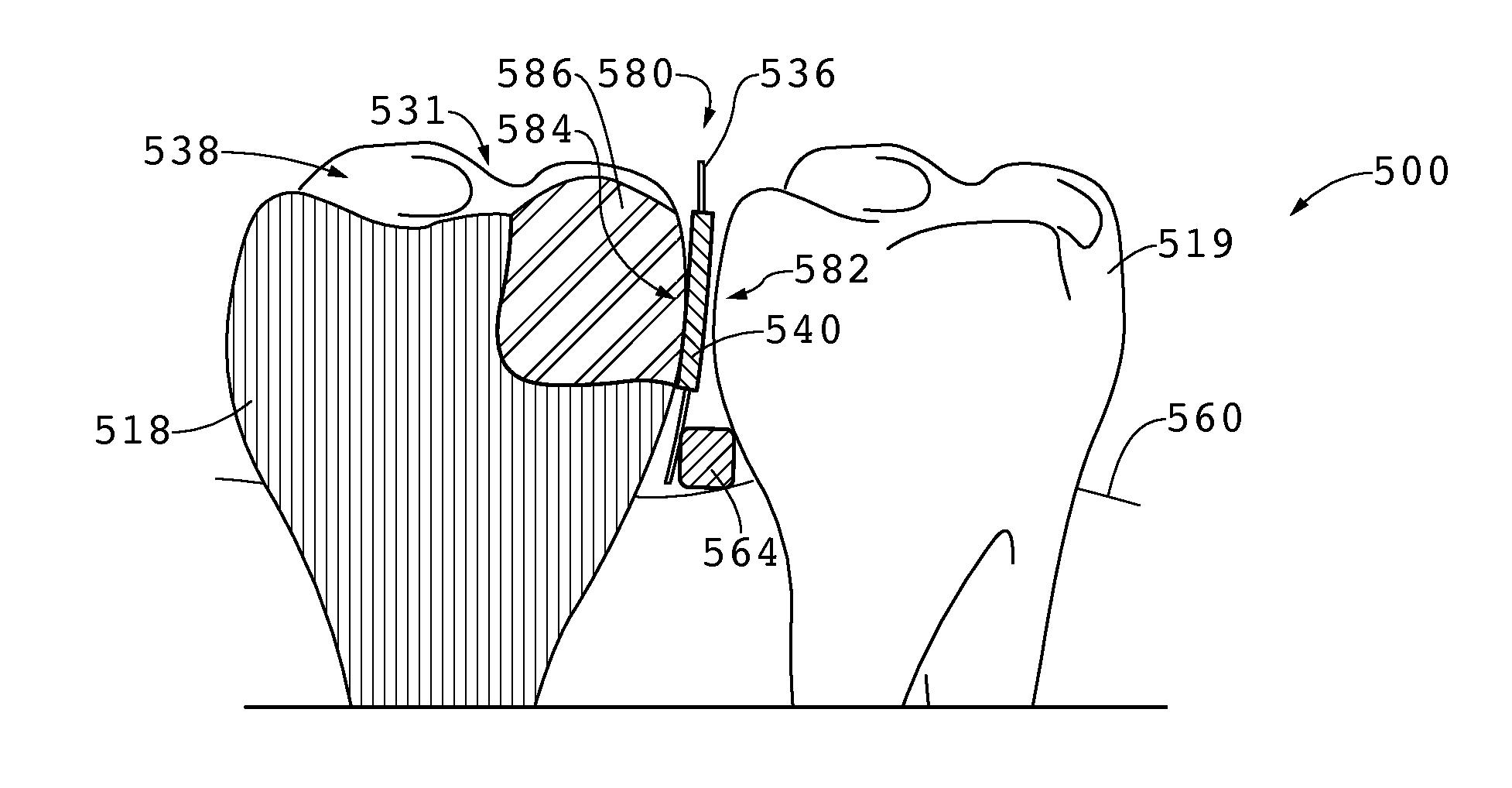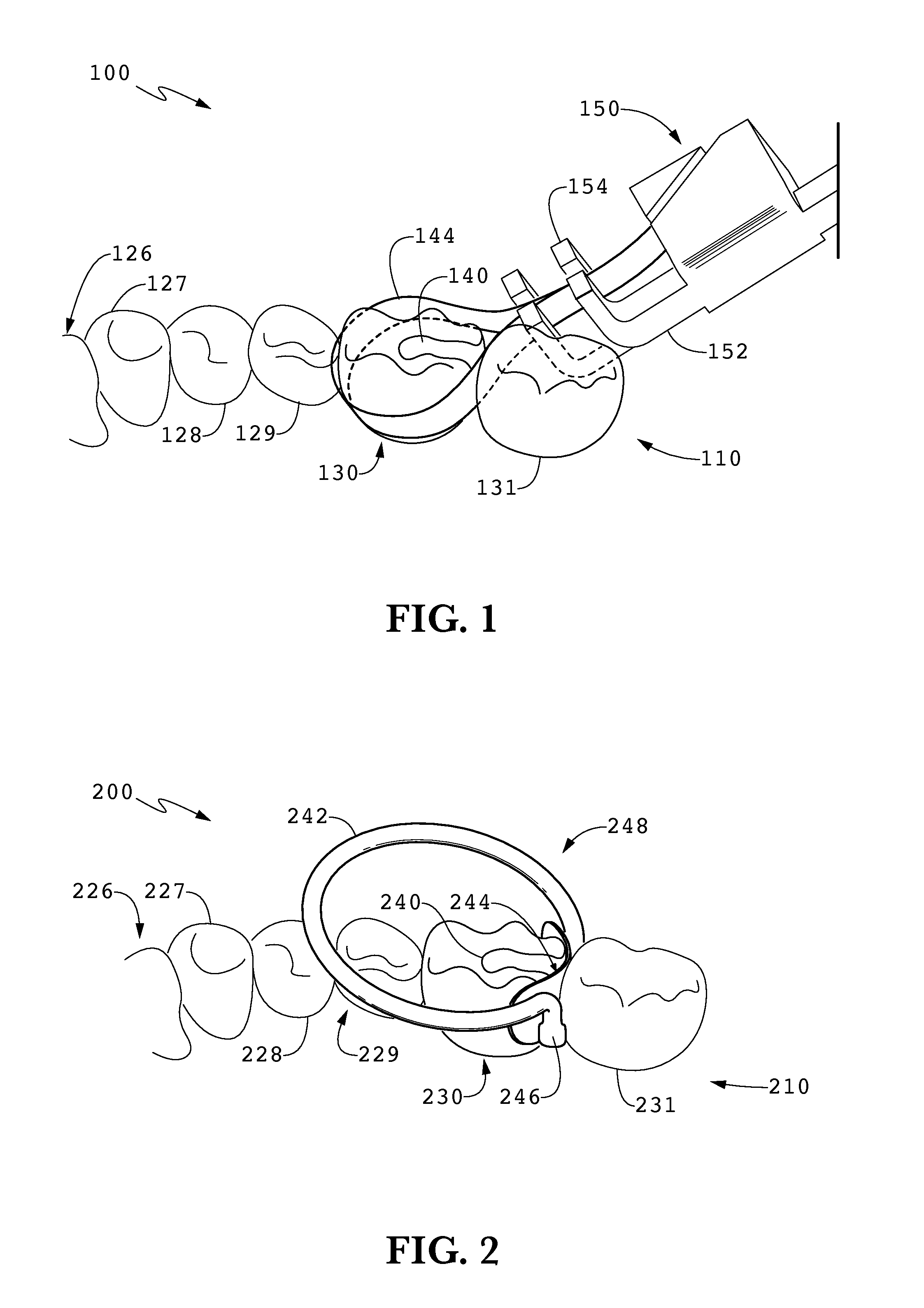System for Maintaining Tooth Contact During Interproximal Dental Restoration
a dental restoration and interproximal technology, applied in the field of dental appliances, can solve the problems of insufficient dental material remaining to hold the restorative material in place, inability to produce these acids, and inability to maintain tooth contact during interproximal dental restorations. achieve the effect of high tensile strength
- Summary
- Abstract
- Description
- Claims
- Application Information
AI Technical Summary
Benefits of technology
Problems solved by technology
Method used
Image
Examples
Embodiment Construction
[0043]The contact matrix band of the presently disclosed embodiments is adaptable for use with a number of matrix band apparatuses that are widely used in dentistry. The contact matrix band solves a continuing problem of the inability to maintain tight interproximal contacts following a Type II dental restoration.
[0044]FIG. 1 shows a typical dental restoration 100 utilizing existing matrix band systems on a posterior mandibular tooth, a molar of the lower jaw, at 110. Teeth 126-131 (representing mandibular teeth 26-31) are in close contact with one another. Tooth 130 is in need of restoration, with shaded area 140 representing the location of a dental carie that has been removed to leave a cavity in need of dental restoration. The restoration shown in FIG. 1 illustrates an interproximal Class 2 cavity preparation, known to those skilled in the art of dentistry. The restoration of tooth 130 extends to the proximal border of tooth 130, so that following the removal of tooth material d...
PUM
 Login to View More
Login to View More Abstract
Description
Claims
Application Information
 Login to View More
Login to View More - R&D
- Intellectual Property
- Life Sciences
- Materials
- Tech Scout
- Unparalleled Data Quality
- Higher Quality Content
- 60% Fewer Hallucinations
Browse by: Latest US Patents, China's latest patents, Technical Efficacy Thesaurus, Application Domain, Technology Topic, Popular Technical Reports.
© 2025 PatSnap. All rights reserved.Legal|Privacy policy|Modern Slavery Act Transparency Statement|Sitemap|About US| Contact US: help@patsnap.com



